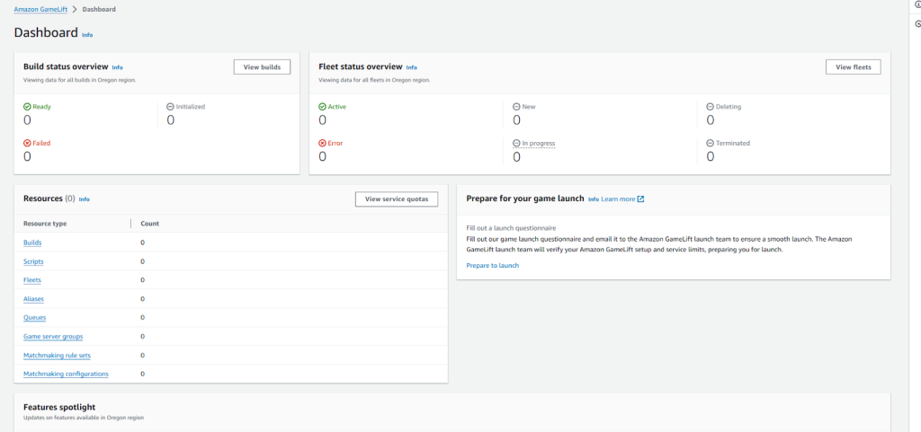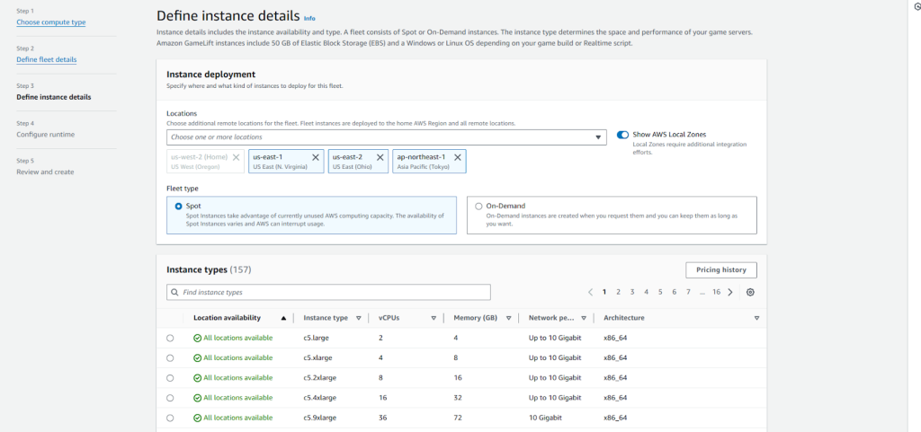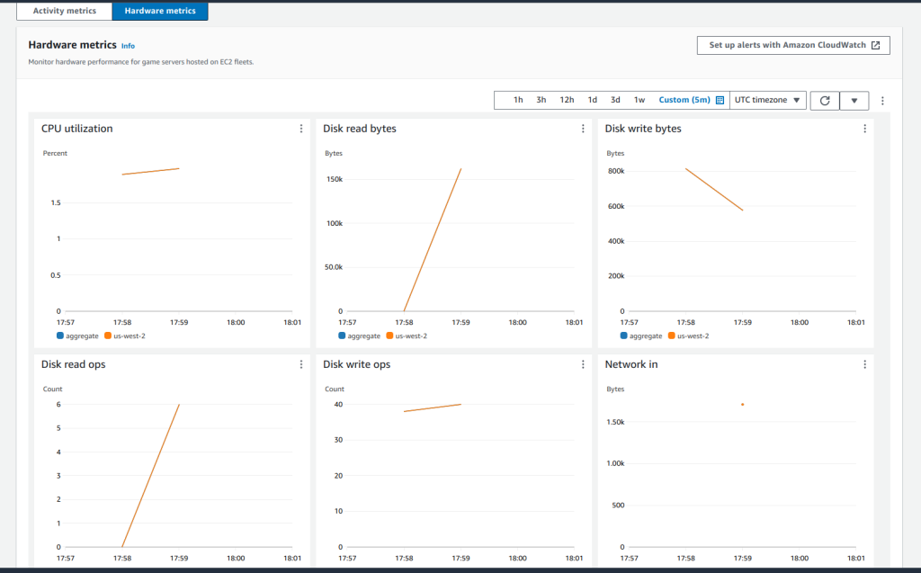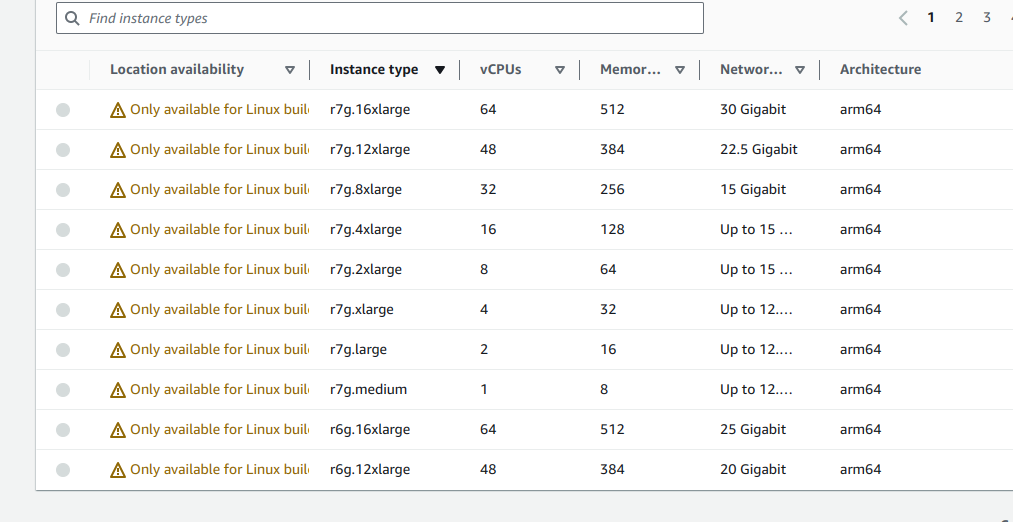Building the Future of Multiplayer Games with AWS GameLift: Key Strategies for Success
Introduction
As the gaming industry grows rapidly, developers face increasing pressure to provide scalable, reliable, and cost-effective solutions for hosting and managing multiplayer game servers. AWS GameLift is Amazon’s answer to this challenge.

AWS Gamelift
In this blog, we will go through the features of AWS GameLift, explore its cost model, and share best practices for using this service to build scalable multiplayer games. In addition, we would analyze the real examples of using GameLift from important game developers such as Behaviour Interactive. By the end, you’ll have valuable lessons and best practices that will help you leverage AWS GameLift in your game development projects.
What is AWS Gamelift?
AWS GameLift is a fully managed service that allows game developers to deploy, operate, and scale dedicated game servers for multiplayer session-based games effortlessly. It’s particularly valuable for developers seeking to reduce operational overhead while focusing on creating the best player experience.

AWS Gamelift
It performs simpler tasks such as deploying servers, managing capacity according to the needs of players, or operating the condition of the server which allows developers to concentrate on providing an optimal gameplay experience.
Is there a reason for Gamelift?
While implementing GameLift, game developers no longer have to deal with the cumbersome task of managing their game servers because they are provided with a dedicated server hosting that demands no resources for allocation, no configuration, and no upkeep. It’s meant for the provision of gameplay with low latency without the need for any infrastructure management workload from game developers which makes it possible for them to fully develop games. No initial fees or long-term contracts are necessary. You only pay for what you use and get various pricing models such as Spot Instances. It has integrated security functions to guard game servers against attacks.

features
How Does It Compare?
- GCP Game Servers: While GCP’s Agones on GKE offer more customization, it requires some manual efforts, making it less user-friendly compared to GameLift’s effortless scaling and management.
- Azure PlayFab Multiplayer: PlayFab is feature-packed with multiplayer services, but AWS GameLift’s deep integration with AWS services and global infrastructure ensures faster scaling and better performance, especially for large-scale multiplayer games.
Architecture Diagram

Architecture Diagram
AWS GameLift Components and Management
Here’s a quick look at key features of gamelift and how they help game developers:
- Dashboard: The GameLift Dashboard provides a comprehensive view of your resources, including the status of builds, fleets, and new feature announcements. It helps you monitor the overall health of your game servers.

Gamelift Dashboard
- Player Session Lookup: The Player Session in Amazon GameLift represents a player’s connection to a game, including details like creation time, status (RESERVED, ACTIVE, COMPLETED, TIMEDOUT), and connection information (IP address, port).
- Fleet: It is a collection of game server instances that host game sessions. Fleets can be deployed in different geographic locations to reduce latency and can be configured as On-Demand or Spot Instances.

fleet
- Builds: These are packaged versions of your game uploaded for server deployment. Each build includes executable files, assets, and configuration details. For example, a build might have a unique ID, version number (e.g., v1.0.0.1), OS of the game server build, and status (e.g., Ready). Efficient build management ensures players access the latest features and improvements, enhancing their gaming experience.

build
- Scripts: Software bundle containing custom logic for your game build.

scripts
- Queues: Group of fleets that are running a game build or script.
- Aliases: It is a pointer to a fleet, allowing you to switch fleets or game versions without changing the game client code.
How AWS GameLift Works
- Game Server Deployment: Developers upload their game server builds to Amazon S3. GameLift retrieves these builds and deploys them across multiple EC2 instances in a fleet.
- Matchmaking: Players are matched into game sessions using FlexMatch, which considers factors like skill level and latency to ensure balanced gameplay.
- Gamelift Scaling: GameLift automatically adjusts the number of servers in a fleet based on real-time player demand, scaling up during peak times.
- Data Management: Player data and game state information can be stored in DynamoDB, allowing for quick access and management.
Best Practices for Using AWS GameLift
- Cost Optimization Practices with FleetIQ and Spot: Use FleetIQ along with Spot Instances to minimize your server’s cost by as much as 90%.
- Server Deployment for Automation: Use CI/CD pipelines for automatically modifying server builds on AWS GameLift. This ensures that, at no one instance, the game servers are operating on an earlier version of the build hence minimizing downtime.
- Performance Analysis: CloudWatch can be used for performance monitoring of servers. Performances like CPU usage, memory, and network utilization should be considered for optimal usage of game servers.

Performance Analysis
- Utilization Of Graviton Instances: For your game servers, it is worth trying the AWS Graviton instances. These ARM cores capture price-performance aspects better than the x86 instances and thus bring in an economy with no performance loss. Graviton instances can be useful in particular for compute-oriented workloads, making your game more scalable and responsive.

Graviton Instances
Read More: Exploring the AWS Graviton Processor: Unveiling the ARM-Based Architecture
Case Study
Behavior Interactive and AWS Gamelift
Behavior Interactive created Dead by Daylight has managed to expand the player base to an incredible 50 million, a 316% growth! This change was done using AWS GameLift to avoid having to design buttons with different sizes.
In 2019, Behaviour switched to AWS GameLift, enabling them to Scale Easily, Support Cross-Platform Play & Reduce Costs.
The Results:
- Enhanced Performance: With the reduced ping times the games ran much smoother.
- New Partnerships: New content with brands such as Konami and Capcom contributed towards increasing the players’ attraction towards the game.
- Focused Development: The backend team will not be either concerned or occupied with managing the server as they do in traditional developments.
- Future Plans: Behaviour intend to implement AWS Graviton processors for enhanced performances and inexpensive carriage.
For the full case study, check it out here.
Bonus Section
Using IAC to Automate AWS GameLift Infrastructure
IAC makes it easy to manage and deploy your AWS GameLift infrastructure by codifying it, enabling you to automate tasks such as creating fleets, managing matchmaking, and configuring game sessions. This not only makes the deployment process smooth but also ensures consistency across different environments.
Key Benefits:
- Automation: You can deploy and update GameLift resources without needing to perform manual steps, reducing human error and saving time.
- Version Control: Every change to your GameLift infrastructure is versioned, making it easy to track modifications and roll back when needed.
- Scalability: IAC allows you to effortlessly scale your fleets, adjust resources, and manage game server groups to meet the dynamic demand of multiplayer games.
For more detailed information, you can refer to the official Terraform AWS GameLift documentation.
Example: Setting Up a GameLift Fleet with Terraform
resource "awscc_gamelift_fleet" "demo_gamelift_fleet" {
name = "demo-fleet"
build_id = "some-build-id"
instance_type = "c5.large"
runtime_config {
server_processes {
concurrent_executions = 1
launch_path = "/local/game/bin/launcher"
}
}
}
Apart from Terraform, you can use AWS’s own IAC service cloudformation as well for provisioning & managing Gamelift resources.
Pricing for Amazon GameLift
Amazon GameLift pricing is based on multiple factors:
- Instance Costs: You pay for EC2 instances to host your game servers. Pricing changes by instance type, region, and whether you choose On-Demand or Spot Instances.
- Data Transfer: Charges apply for data transferred out of GameLift to the internet or other AWS services. Inbound data transfer is usually at no charge.
- Storage: There are likely to be fees associated with the storage of your game builds and assets that have been stored in Amazon S3.
- Additional Features: The storage limitations for peak CCU, Players per game session & Game sessions per instance may also affect the pricing of such service
For detailed pricing information, it is better to visit the AWS GameLift Pricing Page to get the most current rates for services normally offered as well as rate calculators to estimate costs based on expected usage.
Conclusion
AWS GameLift takes over the unnecessary server management and matchmaking burden of multiplayer games whereby developers can only focus on the part of the game development. It is easy to understand why companies are moving to AWS Gamelift for the great stories told by companies such as Behaviour Interactive because GameLift works wonders. Adopting GameLift can lead to better games and improve the user experience. If you want to know more about the possibilities of GameLift for your projects, do not hesitate to contact us at TO THE NEW. Our AWS Certified Architects and DevOps Engineers are committed to saving you time and resources while improving business efficiency and reliability.



